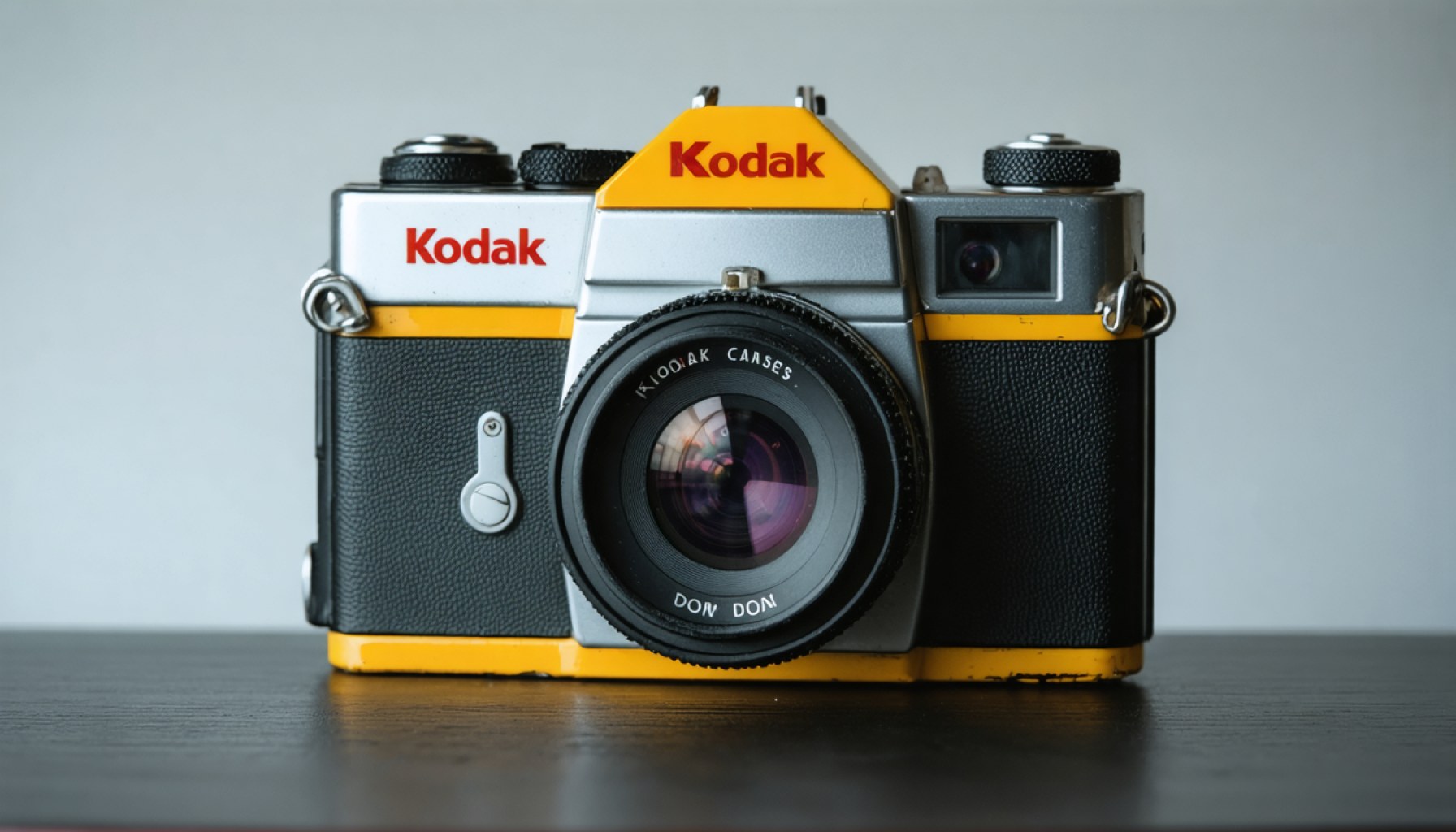- Kodak’s share price dropped 17% over the past quarter, despite a 161% gain over the last decade.
- Transitioning to profitability three years ago was a key inflection point for Kodak, with earnings per share growing at 51% annually.
- There is a disconnect between Kodak’s growing earnings and falling share price, raising questions about market perception.
- Insider buying activity suggests internal confidence in Kodak’s future potential despite market skepticism.
- Investors face the challenge of navigating Kodak’s historical legacy alongside its present-day financial realities.
- Pragmatic investors should focus on broader market trends and avoid letting nostalgia influence their financial decisions.
Eastman Kodak Company, a titan that once captured the imagination of both everyday shutterbugs and professional photographers, seems to be offering a mixed bag of returns to its investors. Over the past quarter, shareholders have faced a sobering reality with a 17% drop in the share price. Yet, the decade-long picture paints a more optimistic scene, showcasing an impressive 161% return. The fascinating transformation over these five years beckons a closer look at Kodak’s underlying business dynamics, juxtaposed against the fluctuating share prices.
Underneath the surface of this storied company lies a compelling narrative of profitability — a goal Kodak achieved merely three years ago. The transition from losses to profits represents a dramatic inflection point, a feat that could rationally justify a spiraling share price. However, the recent downturn puzzles many, with earnings per share surging at 51% per year while the share price has taken a downward path, falling 6% annually over the past three years.
There is a disconnect between Kodak’s growing earnings and its falling share price, reminiscent of the market’s occasional irrationality, as noted by the famed investor Warren Buffett. Could this puzzling trajectory signify that the market simply hasn’t caught up with Kodak’s internal successes, or is there underlying skepticism about its future potential?
Intriguingly, this period of uncertainty hasn’t deterred insiders; quite the opposite, as they’ve been buying shares over the last year. Such insider purchases often hint at optimism within the company ranks, a bullish signal suggesting that those closest to the heart of the organization see value where others perhaps don’t.
The key takeaway here for any discerning investor is to peel back the layers on Kodak. The company stands at a crossroads. Could the brand that once redefined imagery pivot its prowess towards a new peak, or does the nostalgia from its golden age overshadow its current pursuits? The rising EPS suggests potential, yet market sentiment remains cautious.
With Kodak at a pivotal juncture, the pragmatic investor will undoubtedly scrutinize the broader market trends, ensuring that emotional nostalgia does not cloud financial judgment. As insiders continue to place bets on Kodak’s trajectory, the watchword remains: informed vigilance. Unraveling Kodak’s complex tapestry, which interweaves historical success with modern-day challenges, requires a discerning eye, capable of distinguishing the potential from the peril.
Is Kodak a Hidden Gem or a Misunderstood Investment?
Understanding Kodak’s Current Dynamics
The Eastman Kodak Company, historically celebrated for its prowess in the photography sector, remains an enigma in the investment realm today. Although its recent share price drop of 17% in the last quarter might trigger investor concern, the company’s decade-long performance tells a brighter story, boasting a 161% return. This divergence between past success and present volatility demands a deeper dive into Kodak’s business operations and market position.
Unpacking Kodak’s Business Transformation
Profitability Journey:
Kodak’s shift from sustained losses to profitability three years ago marked a significant milestone, yet the share price’s downward spiral over the past three years remains perplexing. Notably, earnings per share (EPS) have surged by an impressive annual rate of 51%. This rise in earnings in contrast to a 6% annual decline in share price over the same period suggests a potential discrepancy in market evaluation.
Insider Activity:
The fact that insiders are acquiring shares signals confidence within the company. Such insider purchasing can serve as a bullish indicator, suggesting that those with intimate knowledge of Kodak’s operations believe in its long-term viability.
Pressing Questions for Potential Investors
Why is there a disconnect between earnings growth and share price?
– This could stem from broader market skepticism about Kodak’s ability to sustain profitability or a lag in market recognition of the company’s internal successes.
How is Kodak adapting to current market trends?
– Kodak has been diversifying its business beyond traditional film photography into sectors such as digital imaging and advanced materials. According to Market Watch’s market forecasts, diversification efforts could bear fruit if matched with agile market strategies.
What potential pitfalls should investors be aware of?
– The company’s legacy can either be a boon or a burden. While nostalgia surrounding Kodak may boost its brand, it can also overshadow transformations needed in an evolving digital landscape.
Actionable Investment Strategies
1. Conduct Thorough Due Diligence: Analyze Kodak’s financial health, focusing on revenue streams beyond traditional photography.
2. Monitor Insider Activity: Continued insider purchases can be a strong indicator of future growth potential.
3. Evaluate Market Sentiment: Use tools to gauge broader market trends and sentiments, which can offer clues about potential shifts.
4. Avoid Emotional Investing: Base decisions on Kodak’s current business model and future potential, minimizing influence from past brand legacy.
Industry Trends and Predictions
– Diversification Continues: Kodak is likely to continue its push into new markets such as 3D printing and smart packaging. Staying informed on emerging technologies can provide insights into Kodak’s future directions.
– Sustainability Focus: Increasingly, companies face pressure to adopt sustainable practices. Kodak’s success may hinge on how well it integrates these practices into its operations, contributing to both cost efficiency and brand goodwill.
Expert Opinions
Experts suggest that, while Kodak faces significant challenges, the company’s commitment to transformation and willingness to embrace innovation could yield long-term rewards. Evaluating Kodak requires discernment and a keen eye for balancing historical achievements with future potential.
By aligning investment strategies with comprehensive analysis, investors can navigate Kodak’s complex landscape, potentially capitalizing on its evolution in the digital age.







